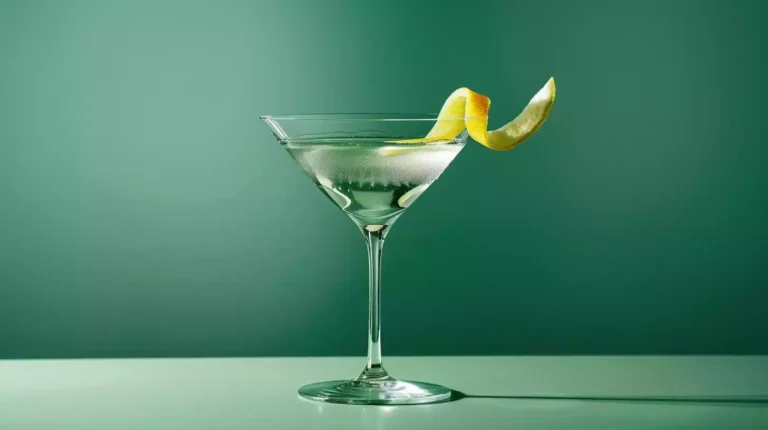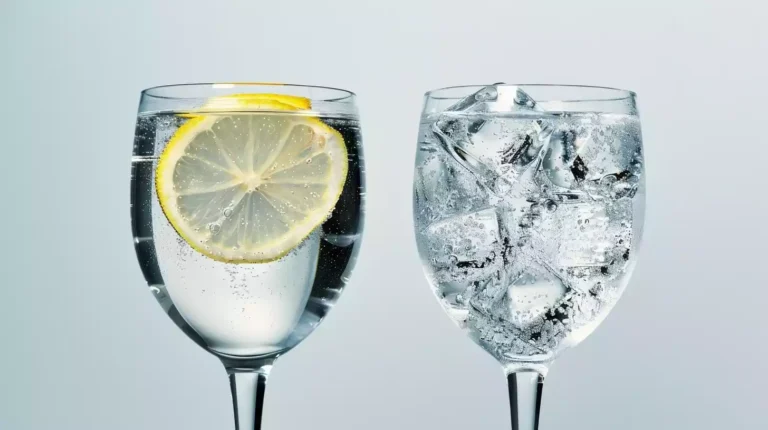What Does a Martini Taste Like?
The Martini is often seen as an inherently sophisticated and glamorous drink. It also can be intimidating to order if you’ve never ordered it. You may be wondering what’s in it, the correct wording used to order it, and most importantly, what exactly it tastes like.
The stereotypical Martini will have a very strong flavor of gin and vermouth with extra emphasis on the juniper berries found in gin. There are a few different Martini variants, though, all with different tastes.
As mentioned, however, there are numerous ways to make and order a Martini that will affect the taste. In this article, we’ll explore the history of the Martini, as well as some of the common variants of the drink and how those affect the taste and consistency of the beverage.
What Does A Classic Martini Taste Like
To put it quite simply, a Martini’s taste varies due to the different ways it can be made. In a stereotypical or classic Martini, it will have a very strong gin flavor with the juniper notes easily perceptible.
Added to this is the dry and slightly sweet taste of vermouth, which blends together perfectly with the crisp and refreshing gin.
The olives added as a garnish will make the beverage taste salty, also. Finally, a Martini is meant to be served as cold as possible, so it is a very refreshing drink as well.
How Was A Martini Created
The official history of the Martini is highly contested, so it is rather difficult to say precisely where this drink comes from. Some think it comes from the Martini brand of vermouth, which is an ingredient in the drink (more on this in a bit).
Another popular theory says that a bartender created it in the town of Martinez, California. This town is so proud of this possible heritage that they have a Martini festival every year where the residents celebrate and take part in consuming their hometown glory.
Either way, the Martini has been a staple in international culture for as long as most people can remember.
Obviously, there are clear examples of characters like James Bond ordering his famous Martini, and this is just one of the examples of the way this classic beverage has made its mark on the cultural zeitgeist all over the world.
How Is A Martini Made
As previously mentioned, this will vary, as there are many different ways to make this drink. However, for our purposes, let’s discuss how to make the classic Martini that comes to mind when this drink is brought up.
The recipe is rather simple. The drink is made by pouring gin over ice and then adding a splash of vermouth. You can then add the garnish of your choice. Olives are an incredibly common choice, as they add a salty flavor to a classic Martini.
Now, let’s take a deep dive into this drink’s common variants and how they affect the flavor and composition of the beverage.
Variant 1: Vermouth Usage

If you’ve ever wondered what people mean when they mention a “dry Martini” vs. a “wet Martini”, this should help clear that up.
A dry Martini is when the drink has a higher amount of gin than it does vermouth. As can be expected, a wet Martini is when the drink has more vermouth than gin.
Finally, a perfect Martini is when the beverage has equal amounts of gin and vermouth.
In terms of how these variations affect the taste, it really just is based on how strong you like your alcoholic drinks.
If you love the taste of gin and don’t mind when your drink is pretty strong, you would probably like a dry Martini. However, if you’re unsure and are dipping your toes into the Martini world, it may be a good idea to order or make your drink on the wet side until you have a better idea of your preferences.
The other vermouth aspect to consider is what kind you use. Vermouth is an aromatized wine, and usually, Dry French vermouth is best to be used for a Martini. However, there are different vermouth flavors that can be experimented with, such as sweet or rose vermouth.
These, of course, stray from the classic Martini taste, but they can add a fun change if you’d like to switch up the look and taste of your Martini.
Variant 2: Gin Versus Vodka
The classic choice for the alcohol base of a Martini is widely accepted as gin. However, there are many Martini lovers who truly enjoy a vodka-based Martini instead.
Remember gin is not just flavored vodka so the differences between the taste of these two bases will be subtle but are worth noting regardless.
As a Martini is often a very strong drink with a large portion of it being the alcohol base, you may not like a Martini that’s gin-based if you simply do not like gin.
Vodka is a great choice for a replacement because it doesn’t have such a distinct taste. You can focus on the lovely flavor of the garnish or vermouth, instead of being distracted by the juniper taste of gin.
If you do like gin, however, but you’re not sure which gin to use in your Martini, we’ve got you covered with our list of the best gins to use in a Martini.
Variant 3: Shaken Versus Stirred
As cool as you may feel saying the classic “shaken, not stirred” line, you may want to be aware of what exactly this specification means for your drink.
A shaken Martini will have a much different composition compared to a stirred drink, and it is important to understand the difference before recklessly placing an order.
The purpose of both is to make the drink as cold as possible, which is how a Martini is intended to be drunk, but there are other slight differences in the final result when using both of these methods.
A shaken Martini, rather intuitively, means that the bartender will shake your cocktail in a cocktail shaker with ice before they then strain it into your glass.
While this definitely does a great job of making your drink ice cold, the downside is that small pieces of the ice can chip off, making the drink much less smooth and sometimes giving it a cloudy appearance. However, this method is quicker to chill the drink.
The alternative, a stirred Martini, is simply when the bartender stores all the ingredients in the cocktail shaker before straining it into the glass. Once again, the benefit of stirring is that it is a smoother and clearer-looking drink.
Some experts claim the ingredients are also better mixed together this way, but this seems like mere preference.
In our experience, a martini with gin should always be stirred. Shaking gin is not such a good idea, as it breaks down the composition.
Variant 4: Garnish Choice

Finally, the last choice you need to make when ordering or crafting the Martini that is just right for you is picking your garnish of choice. This decision has a big effect on the taste of your Martini, so you want to make sure you consider your options and choose wisely.
The two most popular choices for a Martini garnish are olives or a lemon peel, often referred to as a Martini “with a twist.” The image of a “classic” Martini probably brings to mind olives for most people, but you will find that both options have strong merits.
If you go with the choice of adding olives, obviously you need to ensure that you like the taste of olives.
They will add a salty, briny factor to the beverage and since this is somewhat of a polarizing taste profile, be sure that it’s something you are into before you add them to your drink.
These olives can also be stuffed with cheese (like pimento or blue cheese) or even stuffed with jalapeno to add an extra kick to the drink.
The benefit of drinking the Martini with a twist is that it naturally adds an aromatic fragrance and a citrusy zest to the scent and flavor. It can transform the beverage from a heavy alcoholic indulgence to a healthy and bright treat.
Many prefer the lemon peel as the olives can be a bit much if you are looking for a light and sparkling sort of beverage.
Final Thoughts
Hopefully exploring these options has helped you get a better idea of what you might like in a Martini.
Don’t let the number of options overwhelm you, and think of it instead as a way to ensure that there is the perfect Martini waiting for you out there, if only you have the patience to try a few different combinations first.
If you’re still worried about ordering a Martini in a bar or restaurant, you can try these combinations from the comfort of your home.
That way, you can experiment in a setting that is comfortable to you, and if you don’t like one of the options you don’t feel awkward or guilty for tossing it.






